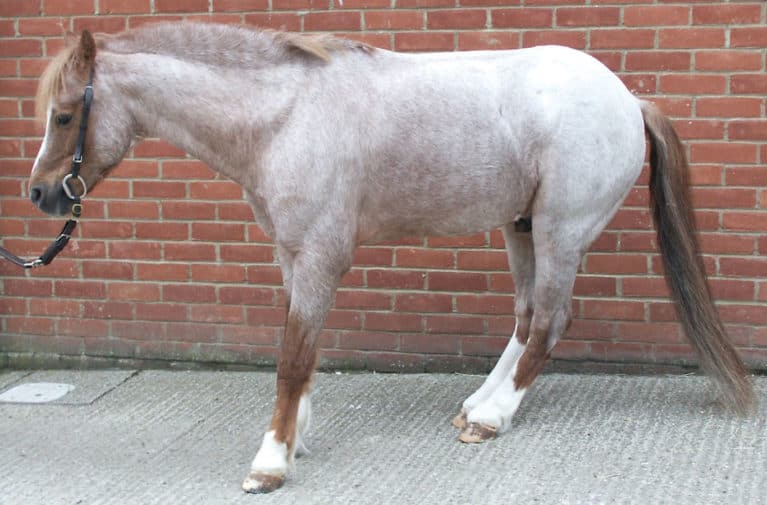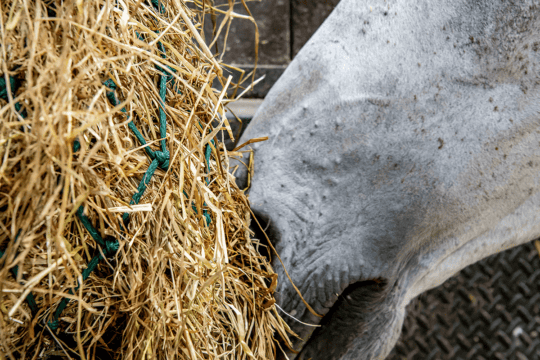The word laminitis strikes fear into any horse owner who’s experienced it, but did you realise your horse could be as at risk as any other? Danica Pollard from the Animal Health Trust explains why and what you can do to prevent it

Laminitis is one of the most devastating and debilitating diseases that afflicts horses, and it can become a welfare concern when animals suffer multiple recurrent episodes. It’s estimated that episodes of laminitis diagnosed by a vet occur in nearly 1 in 200 horses or ponies registered with a veterinary practice, and that they account for nearly 1 in 200 vet visits. This sounds like a lot, but may actually be an underestimate, because not all horses affected by the disease will see a vet.
What’s more, a study has shown that approximately half of owners suspect their horse has laminitis when they call the vet. The remaining half, although recognising their horse needs veterinary attention, don’t suspect that laminitis is the cause of the problem. So with the disease being such a huge problem and owners struggling to recognise when their horse is affected, what can be done to keep this devastating disease under control? When it comes to defeating laminitis, knowledge is power.
What is laminitis?
Laminitis occurs when the join between the epidermal lamina and the dermal lamina is weakened. This results in inflammation, excruciating pain and instability of the pedal bone, because it’s no longer firmly suspended by the laminar region.
In severe cases, the laminae become so weakened that they’re no longer able to suspend the pedal bone in its normal position. When this happens, permanent changes occur inside the hoof as the pedal bone rotates or sinks, crushing soft tissues, damaging blood vessels and nerves, and adversely affecting hoof horn growth. At this stage, the feet are considered to have undergone chronic laminitic changes and a full recovery is no longer possible, leaving the horse with permanent foot impairment that requires careful, ongoing management to prevent further degenerative changes and pain.
Researchers have started to slowly piece together the puzzle of how and why laminitis occurs, but the exact trigger factors for the disease remain unclear. However, it’s been found that disease, infection, inflammation, blood circulatory changes, hormonal imbalances, mechanical trauma – for example, excessive work on hard ground – or overloading – for example, the supporting leg in a very lame horse – of the limbs can trigger the disease.
Laminitis risk factors
Every horse has the potential to develop laminitis, however, some are more at risk than others. There is evidence that the risk can be influenced by the individual’s own genetic makeup, however, environmental influences can play a large role in either increasing or reducing this risk. Potential risk factors include…
- being overweight A study reported that the vets involved in the research considered nearly 65% of horses with laminitis to be overweight
- season Once considered to be a spring-time disease, laminitis occurs year-round, with regional and seasonal differences, so it’s important to remain vigilant all year
- height Taller animals are less likely to develop laminitis than smaller ones
- rapid weight gain Evaluating your horse’s weight and condition regularly will help you notice weight gain. You can then adapt his diet and exercise regime to help him maintain a healthy weight
- new access to grass Make changes to your horse’s diet gradually and over a long period, even if only changing hay or pasture. Strip-grazing and muzzling can help reduce the amount of grass consumed
- box rest This has been highlighted in studies as a potential risk factor, but further research is required to understand whether the box rest is associated with initiating laminitis or if the horse was put on box rest for the symptoms of laminitis before it had been diagnosed
- lameness or soreness after shoeing or trimming Work with your farrier or trimmer to develop a regular hoof care routine for your horse
- endocrinopathic disease, such as pituitary pars intermedia dysfunction (PPID) or equine metabolic syndrome. Horses with an endocrinopathic disease are almost 20 times more likely to have laminitis than those without
- increased time since last worming Further research is needed to decipher whether an increasing worm burden or an effect of the drugs themselves may be associated with laminitis
- previous history of laminitis Once a horse has had the condition, there’s a much greater risk of it happening again, so he’ll require careful management
Safeguarding your horse against laminitis
The key to protecting your horse against laminitis is considering the different risk factors and taking action to reduce the risk where possible. And with every horse having the potential to develop the condition, this is something we should all be doing.
The other important factor is early recognition to ensure your horse has the best recovery. However, recognising a case of laminitis is difficult because many of the signs are similar to those seen with other conditions. This is why it’s so often missed by owners. So ensure you know what to look out for and if you have any doubts as to whether your horse might have developed laminitis, call your vet straightaway for advice.
Your Comments
2 thoughts on “Laminitis – everything you need to know”
Leave a Reply
You must be logged in to post a comment.













Hi just after some advice really my mare has had laminitis and some rotation in her back feet. She is now as sound as she can be but great considering, I’m looking for boots for her to start riding her againthat will give her the support that she will need so any help would be appreciated in finding a make that is good. thanks in advance.
what a shame that not any mention of hindgut acidosis/ulceration or just the digestive system is mentioned as a risk factor 🙁